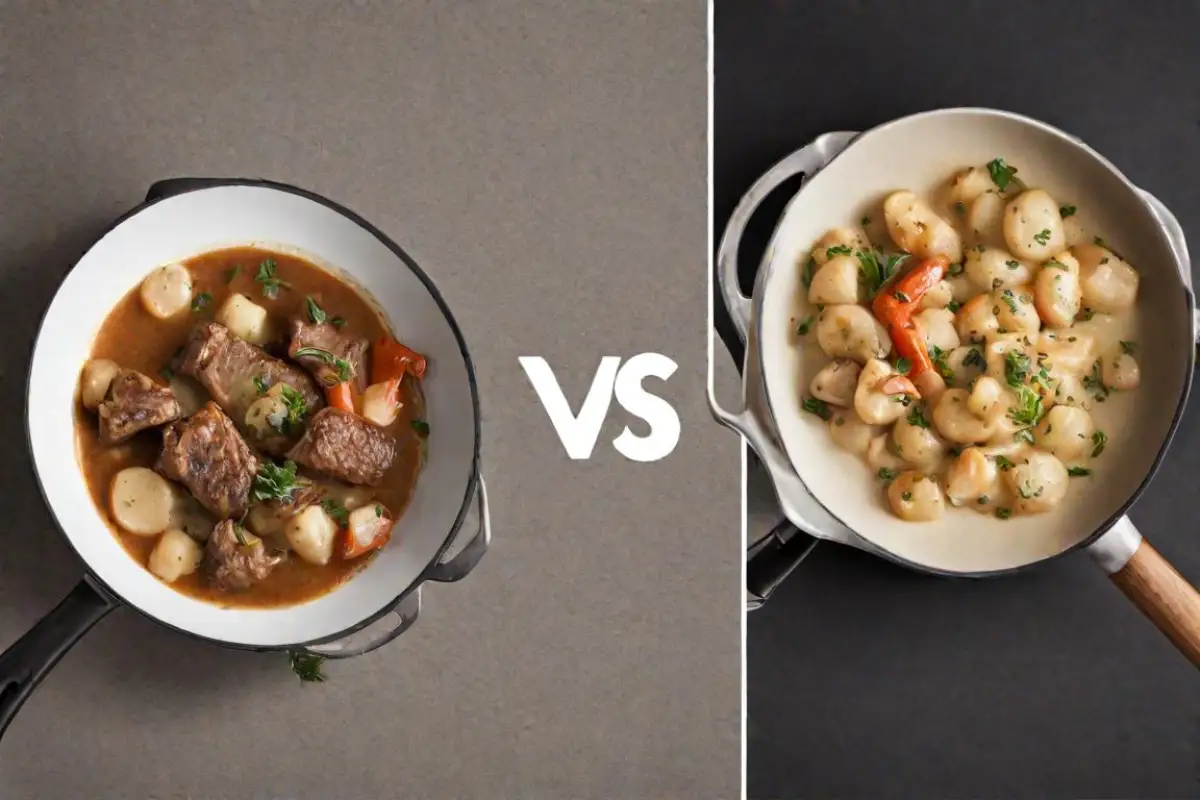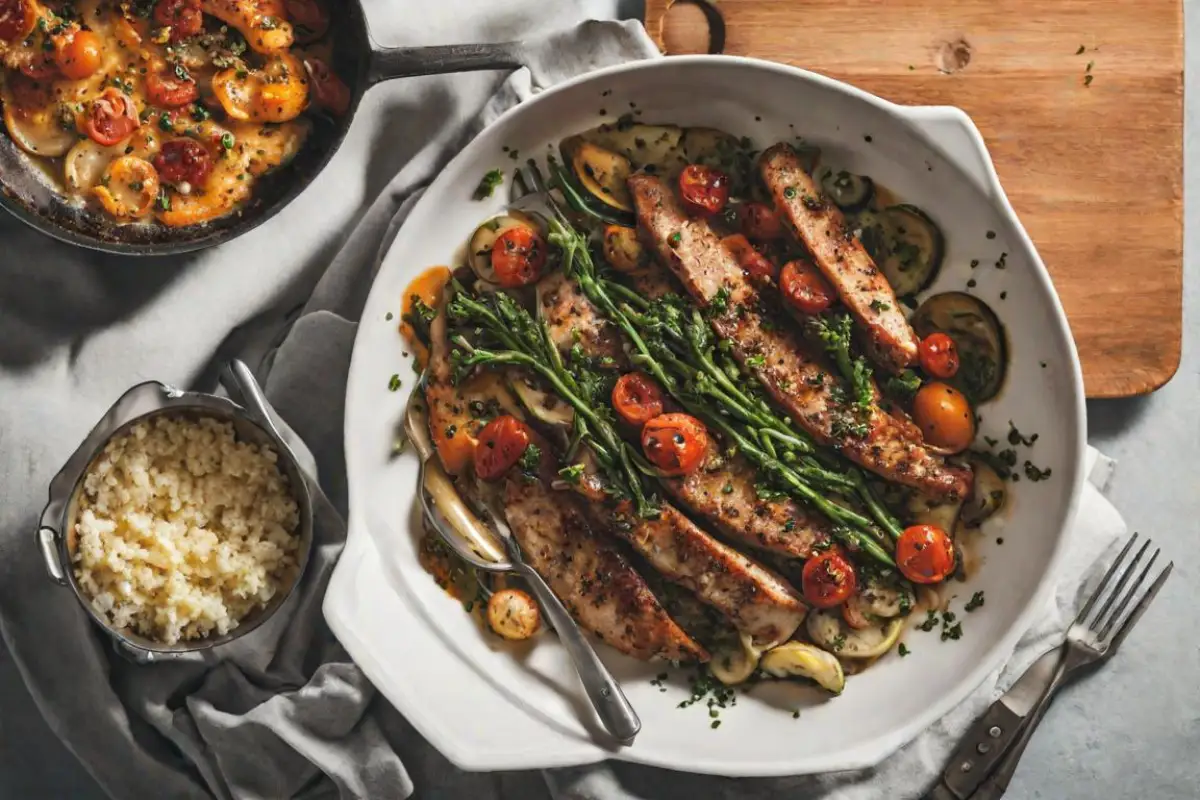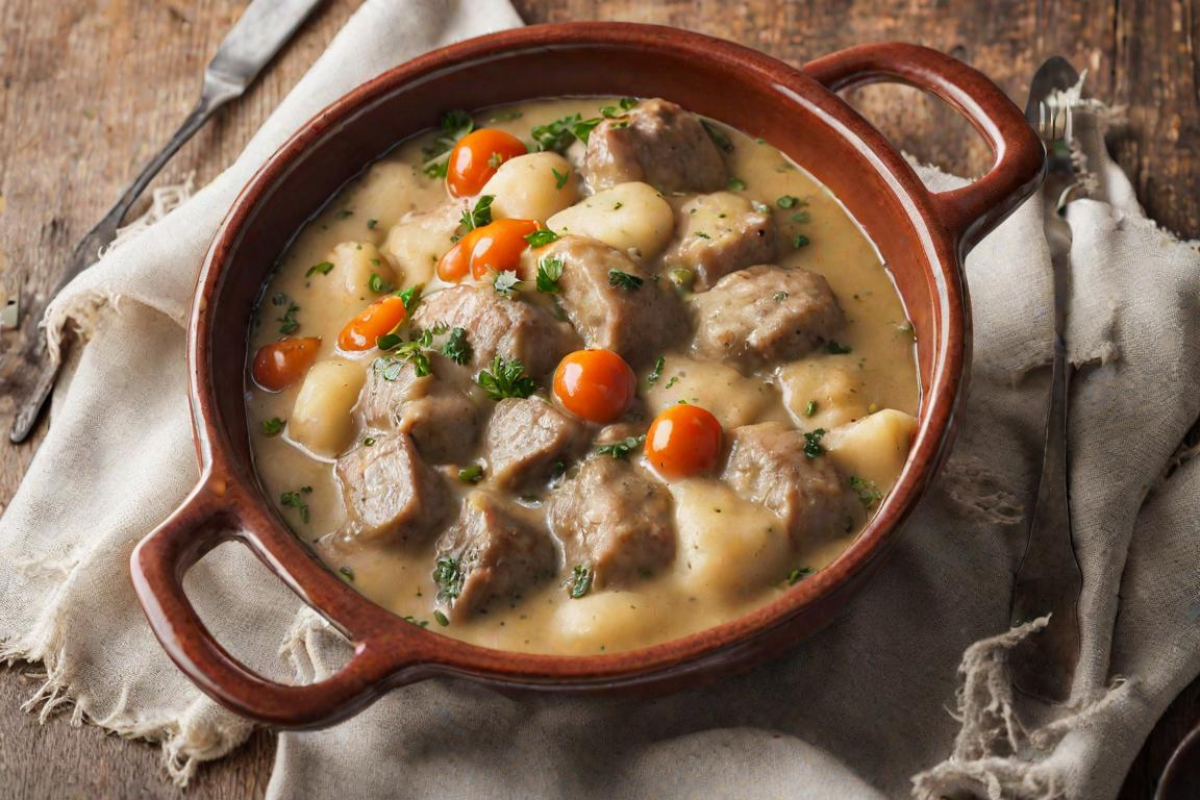Welcome to the delightful world of culinary arts, where flavors blend and techniques shape our dining experiences! Today, we’re exploring two classic cooking methods that have stood the test of time: sauté and fricassee. Whether you’re a home cook looking to refine your skills or a food enthusiast curious about culinary terms, this post will shed light on the subtle yet significant differences between these two techniques. Understanding these methods is not just about following recipes; it’s about embarking on a journey through tradition, culture, and taste. So, grab your sauté pan, and let’s dive into the art of cooking with sauté and fricassee!
Sautéing: Quick and Flavorful
The Basics of Sautéing
Sautéing is fast-paced and flavorful. It comes from the French word ‘Sauter’, meaning ‘to jump’. Here, ingredients dance in a hot pan with oil or butter. The goal? A light, even cook.
Why Sauté?
This method is ideal for vegetables and white meats. It’s about quick cooking and keeping flavors intact. Think of it as a quick flavor boost for your ingredients.
Fricasseeing: A Blend of Techniques
Understanding Fricassee
Fricassee is unique. It’s a mix of sautéing and stewing. Originating from French cooking, it starts with a gentle sauté. The twist? No browning of meat.
The Process
In fricassee, white meat is sautéed and then simmered in liquid. This could be a white sauce or a tomato base. The result? Tender, flavor-packed meat.
Comparing Sauté and Fricassee: A Culinary Contrast
Cooking Equipment
When sautéing, the star is the sauté pan. It’s all about high heat and quick movement. Fricassee, on the other hand, often uses a Dutch oven. It’s perfect for slow, even cooking. Two methods, and two different types of cookware.
Ingredient Preparation
In sautéing, ingredients are prepped for quick cooking. Think thin slices or small pieces. Fricassee requires a different approach. The meat is usually left in larger pieces, ideal for slow cooking until tender.
Flavor and Texture
Sautéing keeps things crisp and vibrant. It’s about locking in flavors and textures quickly. Fricassee is a slower journey to richness. The slow cooking melds flavors deeply, creating a tender and succulent dish.
Recipes and Variations: Exploring the Possibilities
Classic Chicken Fricassee
This dish is a testament to the fricassee method. It combines gently sautéed chicken with a creamy sauce. A classic that showcases the depth of this cooking style.
Sautéed Comfort Foods
Think buttered noodles or sautéed veggies. These quick, comforting dishes bring out the best in the sautéing technique. They’re simple yet packed with flavor.
Side Pairings
What complements these dishes? Mashed potatoes work wonders with a rich fricassee. They absorb the sauce beautifully. For a sautéed dish, something light like a fresh salad balances the meal.
Nutritional Considerations: Health in Every Bite
Health Benefits of Sautéing
Firstly, sautéing is a top pick for healthy eating. It uses less oil, cutting down on calories. Plus, it’s great for keeping veggies nutrient-rich, better than longer cooking methods. For more on healthy cooking, see this CNN article.
Fricassee: A Balanced Approach
Meanwhile, fricassee offers its health advantages. The slow-cooking method allows for deeper flavor with less salt. Also, using lean meats and plenty of vegetables can make it a nutritious meal option.
Professional Tips and Tricks: Cooking Like a Chef
Mastering Sautéing
To start, let’s focus on sautéing. The key? A hot pan and quick movement. Professional chefs recommend using high-quality oils. Why? They withstand higher temperatures without burning.
Perfecting Fricassee
Next, let’s tackle fricassee. The secret lies in patience. Slow and low is the way to go. Chefs advise using fresh herbs and spices. This enhances flavor without overpowering the dish.
FAQs Section
What makes something a fricassee?
A fricassee stands out in the culinary world with its distinctive approach. It typically begins with meat, commonly white meat, that is gently sautéed but not browned. Following this, a liquid – such as a savory white sauce or a rich broth – is introduced. The essence of this method lies in the simmering process. As the meat slowly simmers in the sauce, it absorbs an array of flavors, resulting in a dish that’s rich and deeply satisfying. To explore this method further and try it out with an intriguing recipe, visit our Fricassee Cake Recipe for a delightful twist on this classic technique.
What does sauté mean in cooking?
Sautéing is a dynamic cooking technique where ingredients are swiftly cooked in a modest amount of oil or butter. This method, typically conducted over high heat, involves continuously moving the ingredients around in the pan. Such vigorous movement is key to the sauté method, as it helps in evenly cooking the ingredients while maintaining their texture and flavor. It’s an ideal approach for those who love their food with a bit of a crunch and full of natural flavors. For a deeper understanding of how this contrasts with other methods, such as fricassee, visit our in-depth guide at What is Fricassee? Meaning in Cooking, where we explore the nuances of these unique culinary techniques.
What is the difference between Fricassee and stew?
The main difference lies in the cooking process. In a stew, all ingredients are typically cooked together slowly, allowing their flavors to combine and deepen. In a fricassee, the meat is first sautéed, then the liquid is added and it’s cooked slowly, which imparts a distinct texture and flavor profile. To understand more about these unique culinary techniques, visit our in-depth guide on the differences between stew and fricassee.
What does Fricassee mean in Italian?
Fricassee, or ‘fricassea’ in Italian, refers to a similar cooking method. It involves sautéing meat without browning and then stewing it in a sauce. The Italian version often includes a mix of herbs, adding a Mediterranean twist to the dish.
To conclude, diving into sauté and fricassee cooking methods takes you on an exciting journey through a world of rich culinary traditions. Sauté brings out the best in your ingredients, sealing in flavor and freshness swiftly, ideal for creating vibrant and lively dishes. In contrast, fricassee methodically reveals layers of deep, rich flavors and tenderness, transforming simple ingredients into sumptuous meals. These techniques beckon you to discover, innovate, and refine your culinary prowess. Embrace the challenge, delve into the diversity of sauté and fricassee, and transform each meal into a thrilling exploration of flavors and textures. Enjoy your cooking adventures, and may every dish you create bring boundless joy and delightful surprises to your table!
READ ALSO: What do the candy corn colors mean?





